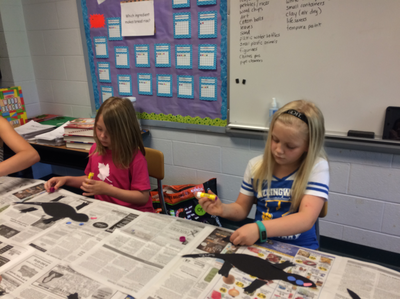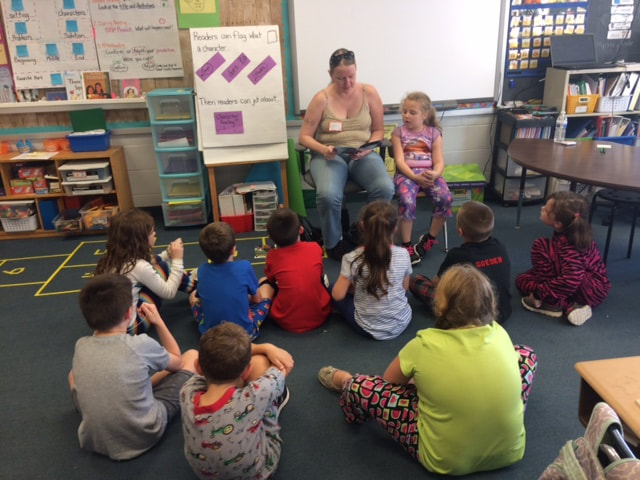|
One of our Readers' Workshop units is Writing About Our Reading. In this unit students create book recommendations for their peers. We created a variety of book recommendations during our mini lessons and annotated them as a class to better understand the components of a book review. Students created their own book reviews which we then turned into book trailers. Our book trailers are posted on our interactive bulletin board in our hallway. You can use a QR-code scanning app to be able to watch our book trailers right in the hallway. We also created a class book trailer for the book Dragons Love Tacos, which is the book that we chose to decorate our door as during March's Dr. Suess's Read Across America celebration. Charts, door decoration, and the class book trailer are followed: Our room worked so hard this year to create and publish our poems. One thing that we did was to have a gallery walk of our poems when they were in the rough draft stage. Students chose a poem that they felt was strong in that it included several components of our poetry lessons. They may have chosen poems based on whether they included pieces from our lessons on line breaks, repetition, strong feelings, word choice, and comparative language. After poems were selected, we did a gallery walk of our poems. Students rotated around the hallway to read their classmates' poems and provide feedback. They used their poetry rubric to give concrete compliments and tips using our poetry concepts. Using this feedback, poems were revised and edited for their final copy, which will be shared at our Authors' Tea. Here are some pictures of the kids hard at work during our gallery walk:
Second grade learned about communities during our Social Studies units. We focus on the three main community types: Urban, Rural, and Suburban. We completed a variety of activities to learn about the communities including reading nonfiction books, watching short video clips, and listening to rap songs about community types. As a culminating activity students created posters about one of the community types and measured the buildings and objects in centimeters. One resource the kids LOVED was Nearpod. Nearpod is an iPad app that allows me to control lessons and content that get shared across iPads. We used the app for a variety of lessons, but the ones the kids love the best were for communities. In one activity they were able to go on virtual field trips to a city or town that represented one of the community types. They were able to use the iPad to get a 360 degree view of Times Square, a city in California, a farm, and farm lands. Another activity that they loved was using Nearpod to connect to Google maps to learn more about Killingworth. We used Google maps to have satellite and 360 degree views of the area by the school and to look at the surrounding towns. The following are a few videos and pictures of the kids using the app and of creating their posters:
This year we have use the Flipped Classroom model for a variety of subjects. A flipped classroom is different than the traditional classroom model in that short videos or lectures are viewed by students at home. This allows students to spend class time to complete projects, activities, or have deeper discussions. We primarily used this model to introduce our parts of speech, communities, and science topics. Instead of making this a part of homework, we watched short video clips and listened to songs to help us introduce new topics prior to our lessons. This did not replace, but rather added to my instruction. We even had some pre-reading opportunities before starting our Science and Social Studies unit. One resource that was really great is the app Epic. Epic has books from multiple genres and multimedia from a variety of publishers. This is a free app for teachers. I was also able to find some great songs that the kids LOVED for when we studied the types of communities and for different parts of speech. Some of the songs that Epic includes are from the makers of Flocabulary. These songs were free as part of the Epic app, but if you want to take a sneak peak of what the Flocabulary videos are like, they often have free sample videos at their home page: www.flocabulary.com/.
In December, our class participated in Hour of Code. Hour of Code is a one hour introduction to coding during Computer Science Education Week. We completed several activities to learn about coding and computer programming. One of the activities they completed was to create a code in which their partner then had to replicate. Students also learned about looping, or repeating, a chunk of code. They learned a looping dance in which several movements were repeated. We then put the dance to music. Free activities for students are located at hourofcode.com and code.org. Hi Everyone! I just wanted to share how impressed I am with how well our class has been doing incorporating technology into our work. We have been using Google Classroom to create a variety of assignments. Our class even taught Mrs. Esposito's and Mrs. Munz's classes how to create their google classroom account, login to a class, and start their assignment. The were experts! Our current assignment has been to create a slide show on Google Classroom using Google Slides. The slide show will be the pages of our informational books. This is how the class is publishing our writing pieces for the end of the informational unit. The students created paper texts with pages for the Table of Contents, Introduction, five chapters, the Conclusion, and an About the Author page. We also revised and edited the documents several times with our partners. In addition to typing the pages into the slide show, they also created illustrations that will be added to each page. Once their slide shows are completed, I will be able totake their finished work and upload it to a website that converts it to a flip book. We currently have one flip book that we created as a class on our publishing page. Here is the link to our publishing page: http://kesgrade2.rsd17.org/room-31-publishers.html . The flipbook is located at the very bottom of the page and is titled "Room31 is Thankful." It is a clickable link that takes you to a new page where you can flip through the pages in our book.
We are wrapping up the end of our second writing unit. In this unit students created informational texts about topics that they felt that they were experts in. This included a wide range of topics which focused on things like TV shows, family members, and pets. Our topics began to change and become focused on what we researched during Readers' Workshop. Our lessons focused on how to plan an informational book, how to hook a reader's attention, and how to develop our writing by using several nonfiction moves. We practiced creating paragraphs with key words, twin sentences to add more details, and created text features to visually explain our topic. Students are currently working on creating a document using their google classroom account. These books will be published as a paper copy and as an online copy for our website. Followed are several charts from our Writing lessons:
We just wrapped up our second Reading unit: "Becoming Experts." In this unit, we read books from a variety topics. Later on in the unit, partnerships and groups focused on reading several texts on one topic. Some of the topics that we researched were dinosaurs, butterflies, sharks, and bats. The culminating activity for the unit were Chatterpix videos that were created and published by the students. The videos are included in our Room 31 Publishers Tab. Followed are several anchor charts that we used throughout the unit:
Our class has been so busy during this first unit of Readers' Workshop! This unit builds upon the work of first grade and is helping to grow our decoding and comprehension skills. During this unit we have focused on strategies to help decode, or sound out, tricky words by using strategies involving word parts and meaning. We have also focused on our comprehension by stopping, thinking, and jotting about the books we are reading. We are building our reading stamina by reading more and more. We are retelling parts of the book and noticing lessons that the story is teaching us. Students are noticing powerful moves from the author and jotting them down to try during our Writing Workshop time. They are busy applying all of these strategies using their independent texts! One tricky strategy that second graders have been working on is the Making Ten to Subtract strategy. In this strategy, students will break about the second number (the subtrahend) in a Math problem by thinking about what you would take away from the first number (minuend) to make 10. Then we would continue to subtract what is left. We practiced this strategy with number lines and graphic organizers. Splitting apart numbers in this way to subtract helps students build their Math fluency and helps with solving tricky Math problems with Mental Math. |
Welcome to Room 31!On this blog you will be able to stay up-to-date on what we are working on in the classroom. Subscribe to the RSS Feed to be alerted when this page is updated. Archives
May 2017
Categories |







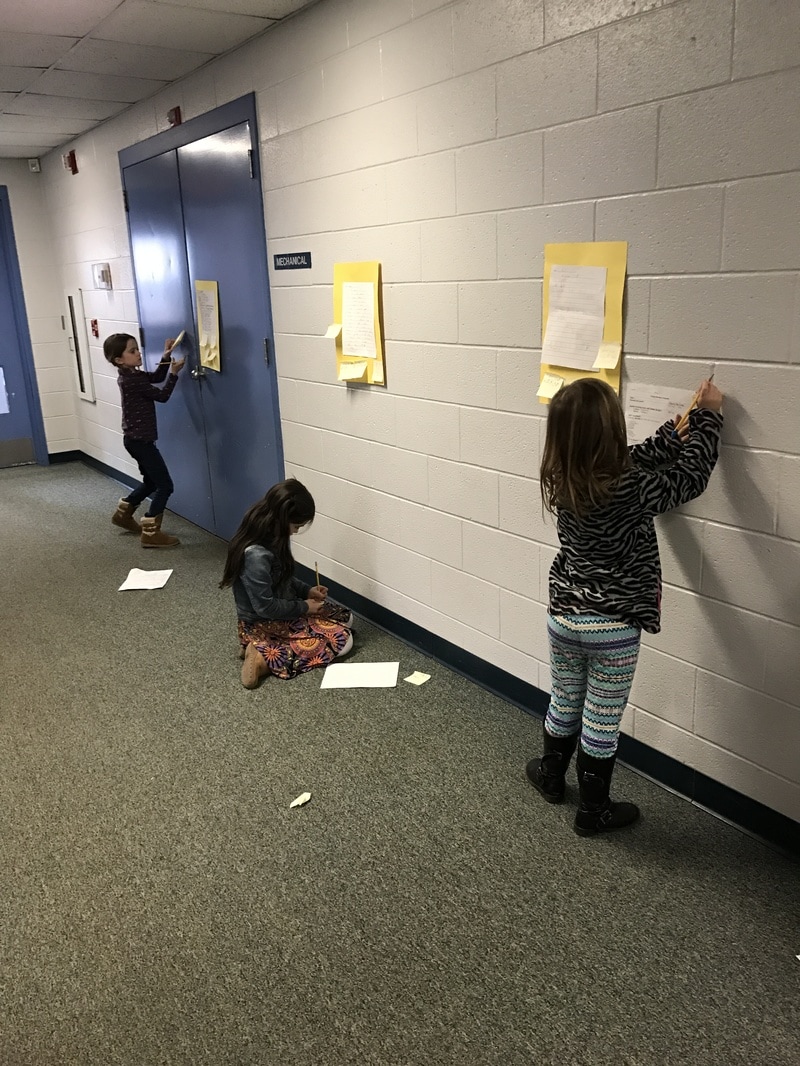








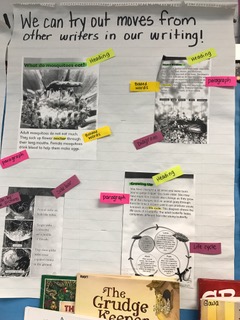


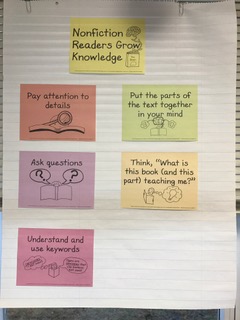


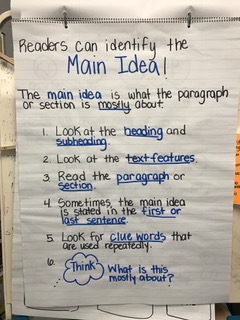






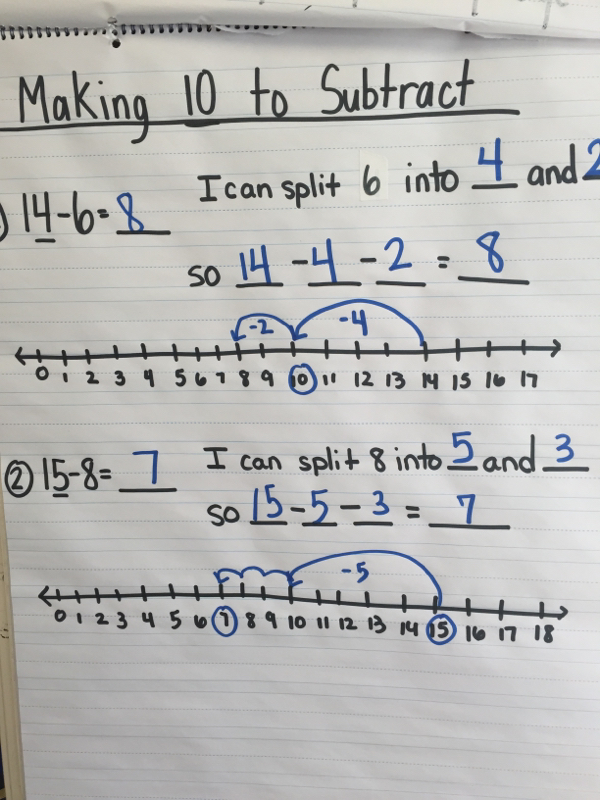

 RSS Feed
RSS Feed



